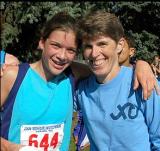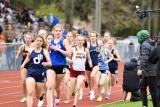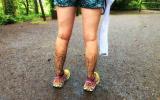Folders |
Running Issues: SafeSport's MissionPublished by
What’s Stopping Sexual, Physical and Psychological Abuse? By Elizabeth Carey for DyeStat Sports have a problem. Research shows that abuse — sexual, physical, psychological — is far too common. According to a 2020 survey of nearly 4,000 adult athletes in the U.S. Olympic and Paralympic movement, 27 percent reported that sexual, emotional, or physical misconduct was a problem in their sport. Nearly half were aware of coaches developing sexual relationships with athletes. For the record, USA Track and Field’s policy prohibits this under a range of conditions that hinge on an imbalance of power, regardless of age. More than half of athletes surveyed who reported unwanted sexual experiences said some or all of those experiences happened before they were 18 years old. Of athletes who experienced sexual harassment or unwanted sexual contact, 93 percent did not submit a formal complaint. Eighteen percent were retaliated against. Sexual harm negatively impacted athletes’ self-perception, mental health and relationships. Approximately 65 percent of athletes reported experiencing psychological harm or neglect. Women and gender non-conforming athletes experienced it at higher rates than men; athletes with a disability experienced it at higher rates than athletes without a disability. Emotional misconduct — behavior that has potential to cause psychological harm to an athlete, such as personal attacks, excessive yelling, physical aggression, or ignoring athletes — is also prohibited by USATF policy. According to the survey, it’s the least understood form of abuse. Athletes aren’t as sure what it is or how to report it. Unfortunately, our sport isn’t immune to these pervasive issues. As athletes, past and present, keep telling me: sexual, physical and psychological abuse and misconduct leave lasting scars. Abuse survivors face a host of challenges, including trauma, retaliation, fear, poor health outcomes, and — yes — declining performance. What’s being done? Some things. But not yet enough. One of the biggest attempts to address these issues is the U.S. Center for SafeSport, an “independent nonprofit” backed by the USOPC. The Center states it is “Dedicated solely to ending sexual, physical and emotional abuse on behalf of athletes everywhere.” In 2015, the U.S. Olympic and Paralympic Committee (USOPC) recommended that national governing bodies, including USATF, adopt the policies and practices of the U.S. Center for SafeSport. The Center develops policies — most significantly the SafeSport Code — and offers educational training about abuse and prevention. It also investigates reports of abuse and misconduct in Olympic sports and their organizations (See: USATF). It can issue sanctions, including temporary and lifetime bans against USATF-associated individuals as it deems necessary. USATF requires a laundry list of people associated with it and its events to take SafeSport online training, pass a SafeSport test, submit a background check, and register as a member. The list includes USATF national office staff, board of directors, registered coaches, certified officials, authorized agents, club officers, national team staff, national committee chairs, association leadership, youth committee members, Athlete Advisory Committee (AAC) members, AAC event leaders, all meet volunteers in an official capacity, youth camp staff, and vendors with access to athletes. (Note omissions on the list: middle and high school coaches, NCAA or other collegiate coaches, private youth club coaches, to name a few.) The Center’s investigations focus on egregious, often illegal offenses, like child sex abuse, sexual misconduct, non-consensual sexual conduct, sexual harassment, and intimate relationships involving an imbalance of power. It refers other misconduct reports, including emotional abuse cases, to USATF. Sounds good, right? Since the Center’s congressional authorization in 2017, in the midst of revelations about USA Gymnastics’ sexual abuse cover-up and Larry Nassar’s horrific crimes, it has faced high demand and challenges. So, how’s it going? Is the process working for our sport through USATF? For athletes? For coaches? Investigative reporting, especially that by reporter Diana Moskovitz, has called attention to insider politics and close ties between the USOPC and the Center. Other drawbacks include a limited scope and jurisdiction, an MIA audit of USATF, and lag-time on investigations. One person, who is involved in an unresolved U.S. Center for SafeSport case and who wishes to remain anonymous, told me they were victimized sexually and emotionally by a USATF-affiliated coach as a young athlete. They are aware of others who had similar experiences and also submitted testimony. The ongoing investigation is now halfway into its third year. The Center didn’t respond to interview requests. A spokesperson told me in a 2019 email that the Center doesn’t “comment on specific matters to protect the integrity of the process and the privacy of the individuals involved, including people reporting abuse.” Carson Potter, head cross country and track coach at Redmond High in Washington, filed a SafeSport report last spring. As a middle school teacher, she’s been trained to notice red flags and had concerns about a coach in Washington. “As a coach, my warning bells were going off,” she said. She tried a few avenues —talking to administration, speaking directly to affected athletes, law enforcement — in addition to filing with SafeSport. The investigation is ongoing, and no sanctions have been issued, but even the investigation itself has given at least one parent pause about letting her athlete train with that coach. Becca Peter, who’s been involved in SafeSport issues from a variety of angles, tries to consider all sides, “because the process needs to be fair for everyone.” She supports the Center being proactive in taking action on cases, but said, “You need to be able to handle it quickly.” The high caseload, reported elsewhere to be initially higher than recommended for its investigators, spurred four-fole increases in staffing of investigators — including former law enforcement officers, detectives, and the like. The good news, at least for some victims and survivors of abuse? A stack of reports have turned into cases that resulted in temporary and/or permanent sanctions against individuals who broke the code. Between March 2017 and August 2021, the Center received 8,711 reports and issued 1,058 sanctions. In 2020, the Center received 2,310 reports of abuse or misconduct and opened 1,883 cases (That’s 81 percent). That same year, it resolved a total of 2,426 cases. “Resolved” means the Center completed an investigation. Very basically, after an intake process, the Center either refers a case to USATF or law enforcement or elsewhere; closes a case due to lack of info; finds an informal resolution; or moves ahead with a formal investigation, which includes a report, notice of decision, chance of appeal or arbitration, potential sanctions, and then a final decision. Along the way the Center might issue a temporary sanction. The Center’s Disciplinary Database presently includes 1,649 individual sanctions — including 91 track and field-associated cases. The USATF’s own disciplinary database includes 91 records, too, with all but two listed as issued by the Center. Susan Hazzard, USATF managing director of communications, said in an email that all reports received by the USATF are investigated and confidential, but that USATF does not comment on the number of reports received. Only one disciplinary record cites emotional misconduct as a reason for sanctions: Alberto Salazar’s. The USATF lists him on its own disciplinary database with a lifetime ban for both sexual and emotional misconduct. (That’s separate from the four-year USADA doping ban issued in 2019.) A ban, temporary or permanent, refers to USATF activities only. Sure, that includes USATF-associated track and field, road running, race walking, cross country, mountain, ultra, and trail running. But there are other organizing bodies that don’t recognize SafeSport bans. That’s why some express concern about tangible consequences for coaches who’ve faced sanctions. In absence of a criminal conviction or through vetting, a lifetime SafeSport ban won’t prevent a coach from, say, attending competitions, working in another capacity within the industry, or coaching privately or even at the high school level. As Alison Wade, founder of Fast Women, wrote in a 2021 newsletter, “In some ways, the most damaging part of a SafeSport ban is the publicity that comes along with it. While high schools, colleges, individual athletes, shoe companies, and federations can still hire Salazar, there will be additional pressure not to, in the event that his four-year doping ban is not convincing enough. "Though SafeSport bans can only do so much, they are important. Among other things, they offer validation and potentially some closure for the complainants.” A key benefit of the Center’s investigative arm is that there’s no statute of limitations. Even if abuse or misconduct happened decades ago, a report could help resolve a case. Anyone can report misconduct or SafeSport code violations by a USATF (or other USOPC-affiliated sport organization) member, historic or present, online (https://uscenterforsafesport.org/report-a-concern or by calling 833-587-7233. Rape, Abuse and Incest National Network (RAINN), the nation’s largest anti-sexual assault nonprofit provides a SafeSport Helpline, with 24/7 confidential support for those affected by sexual violence: https://hotline.rainn.org/safesport. The hotline fielded 1,290 calls in 2020. In USATF’s SafeSport handbook, CEO Max Siegel wrote, “Working collaboratively with the USOPC and the U.S. Center for SafeSport, our shared goal through SafeSport remains to ensure every athlete is safe and supported.” That finish line still feels a long ways off.
Resources Report sexual, physical, or emotional abuse or misconduct involving any USOPM member: https://uscenterforsafesport.org/report-a-concern https://www.usatf.org/safe-sport/reporting-a-safe-sport-complaint 833-5US-SAFE (587-7233)
SafeSport Hotline 866-200-0796 https://hotline.rainn.org/safesport
National Sexual Assault Hotline 1-800-656-4673
National Eating Disorder Helpline 1-800-931-2237 https://www.nationaleatingdisorders.org/help-support/contact-helpline
National Suicide Prevention Lifeline 1-800-273-8255 https://suicidepreventionlifeline.org/
Find a K-12 and post-secondary Title IX coordinator: https://www.aauw.org/resources/legal/title-ix-resources/title-ix-coordinator/
### Elizabeth Carey (https://elizabethwcarey.com/) is a writer and running coach based in Seattle, Washington. Her first book, GIRLS RUNNING, co-authored with Melody Fairchild, is available at your local bookstore and here: https://shop.aer.io/GirlsRunning/p/Girls_Running_All_You_Need_to_Strive_Thrive_and_Run_Your_Best/9781948007184-9934.
More news |







